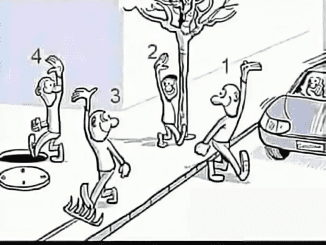Did you know that relief from a sore neck or better liver function might be just a foot massage away? If that sounds surprising, welcome to the world of reflexology—a natural, non-invasive practice of relieving pain and improving health by stimulating pressure points on the feet. While you can visit a professional reflexologist, you can also try reflexology at home with a simple foot massage. In this article, we’ll explore how reflexology works, the benefits it provides, and a step-by-step guide to using pressure points on your feet to promote healing and relaxation.

What Is Reflexology? Understanding the Basics
Reflexology is based on the concept that certain points on your feet (and hands) correspond to different organs, glands, and systems in your body. By applying pressure to these specific points, you can potentially relieve pain, reduce stress, and improve overall well-being. The practice has ancient roots in various cultures, including Chinese and Egyptian traditions, but today, reflexology has become a widely recognized alternative therapy for promoting health.
The science of reflexology suggests that these pressure points, when stimulated, can influence other parts of the body, encouraging relaxation, boosting circulation, and reducing tension. By targeting these reflex areas, reflexologists believe you can experience physical and psychological benefits that promote natural healing.
How Does Reflexology Work?
Reflexology operates on the theory that there are “zones” in the feet and hands that mirror the rest of the body. Each zone corresponds with a particular organ, muscle group, or nerve, and by stimulating these zones, reflexologists aim to restore balance and promote healing.
Applying pressure to reflex points in the feet is thought to activate the nervous system, sending signals to various parts of the body to reduce stress. Stress reduction, in turn, allows the body to work more efficiently and heal itself naturally. Reflexology has even been linked to improvements in symptoms related to conditions such as diabetes, premenstrual syndrome, multiple sclerosis, and insomnia. However, while reflexology is complementary, it’s important to remember it should not replace traditional medical treatment.
Health Benefits of Using Pressure Points in the Feet
Reflexology offers a variety of potential health benefits for both those with specific ailments and generally healthy individuals. Here are some of the primary advantages that you may experience by stimulating the pressure points in your feet:
- Enhances Nerve Function: Reflexology may help stimulate nerve endings, improving overall nerve function, particularly in the feet.
- Boosts Energy Levels: By increasing circulation and stimulating energy flow, reflexology may help boost energy.
- Improves Blood Circulation: The pressure applied during reflexology massages can increase blood flow, delivering nutrients and oxygen more effectively throughout the body.
- Detoxifies the Body: Reflexology may help stimulate the lymphatic system, which is responsible for removing toxins and waste from the body.
- Relieves Migraine Pain: Targeting specific points can help ease migraine symptoms, offering natural pain relief without medication.
- Supports the Urinary Tract: Reflexology can improve the function of organs responsible for waste elimination, such as the kidneys and bladder.
- Accelerates Recovery from Injuries: Increased blood flow and reduced inflammation may speed up recovery after an injury.
- Promotes Better Sleep: Reflexology can help treat sleep disorders by relaxing the body and reducing stress, which improves sleep quality.
- Reduces Depression and Anxiety: Reflexology may help manage symptoms of depression and anxiety by inducing relaxation and reducing overall tension.
- Alleviates General Pain: Reflexology’s primary benefit is natural pain relief, targeting specific points to alleviate aches and pains throughout the body.
How to Use a Foot Reflexology Chart
If you’re interested in trying reflexology for yourself, a foot reflexology chart is an excellent tool to guide you. This chart provides a visual representation of which areas of the foot correspond to different body parts, making it easy to know where to apply pressure based on the type of relief you seek.

Here’s a quick guide on how to use a foot reflexology chart for pain relief:
- Find a Comfortable Position: Sit in a sturdy chair and place one foot on the opposite knee to access the sole easily. Keep your back straight to avoid strain.
- Identify the Area to Target: Using your reflexology chart, locate the area on your foot that corresponds to the part of your body you want to address. For example, if you’re experiencing neck pain, look for the “neck” area on the chart.
- Apply Pressure: Once you’ve located the pressure point, use your thumb to press and knead the area deeply for 1-2 minutes. Apply enough pressure to feel the sensation but avoid causing pain.
- Repeat on the Opposite Foot: Perform the same steps on the corresponding area of your other foot, pressing firmly for 1-2 minutes.
- Target Multiple Areas if Needed: If you have more than one area of concern, repeat this process on the appropriate points on your feet for additional relief.
Popular Pressure Points and Their Benefits
To help you get started, here are some commonly used pressure points on the feet and their corresponding health benefits:
- Head and Brain: Found on the tips of the toes, these points are said to relieve headaches and promote mental clarity.
- Sinuses: Located on the pads just below the toes, applying pressure here may help alleviate sinus congestion and improve breathing.
- Neck and Throat: Found on the upper part of the ball of the foot, these points can help relieve neck pain and soothe a sore throat.
- Stomach and Digestive System: Located in the arch of the foot, targeting these areas can ease digestive discomfort and improve gut health.
- Liver and Kidneys: Found on the inner arches of the feet, applying pressure here may support liver detoxification and kidney health.
- Lower Back: Positioned along the heel, massaging this area may help alleviate lower back pain and improve spinal health.

Tips for Effective Reflexology at Home
While reflexology can be done by a professional, you can achieve great results with a few simple techniques at home. Here are some tips to make your self-reflexology session more effective:
- Use Lotion or Oil: A bit of lotion or massage oil can reduce friction, making it easier to massage specific points without irritating the skin.
- Stay Consistent: Reflexology works best when performed regularly. You can do it daily, but for optimal results, take a 3-4 day break after 10 consecutive days to let your body reset.
- Focus on Breathing: Deep breathing helps to relax the body, making the reflexology session more effective.
- Listen to Your Body: Reflexology should never hurt. Adjust the pressure if you experience discomfort and avoid areas that feel too sensitive.
The Limitations of Reflexology
While reflexology has many benefits, it’s important to remember that it is a complementary therapy, not a substitute for medical treatment. Reflexology can provide relief for stress and some symptoms of common ailments, but it is not a cure. For serious or chronic conditions, it’s essential to consult with a healthcare provider.
Conclusion: Discover the Healing Power of Reflexology
Reflexology offers a natural, non-invasive way to relieve pain, reduce stress, and promote overall well-being. By using a foot reflexology chart and applying pressure to specific points on your feet, you can target various areas of your body to relieve symptoms and enhance health. Whether you’re dealing with a specific health issue or simply seeking relaxation, reflexology provides a therapeutic experience that connects the mind and body.
With a little practice, you can harness the benefits of reflexology right from the comfort of your home. So, the next time you’re feeling aches, stress, or discomfort, give this ancient technique a try and see how a simple foot massage can make a difference.


